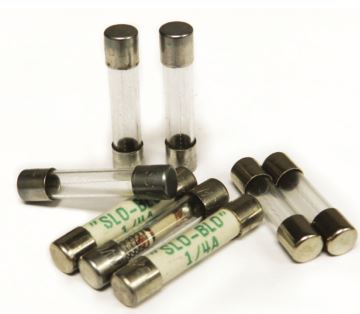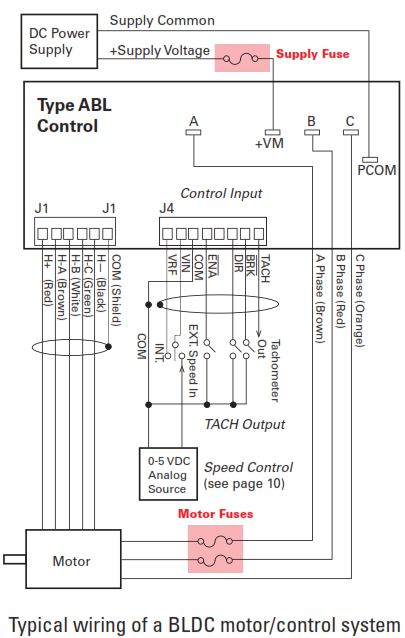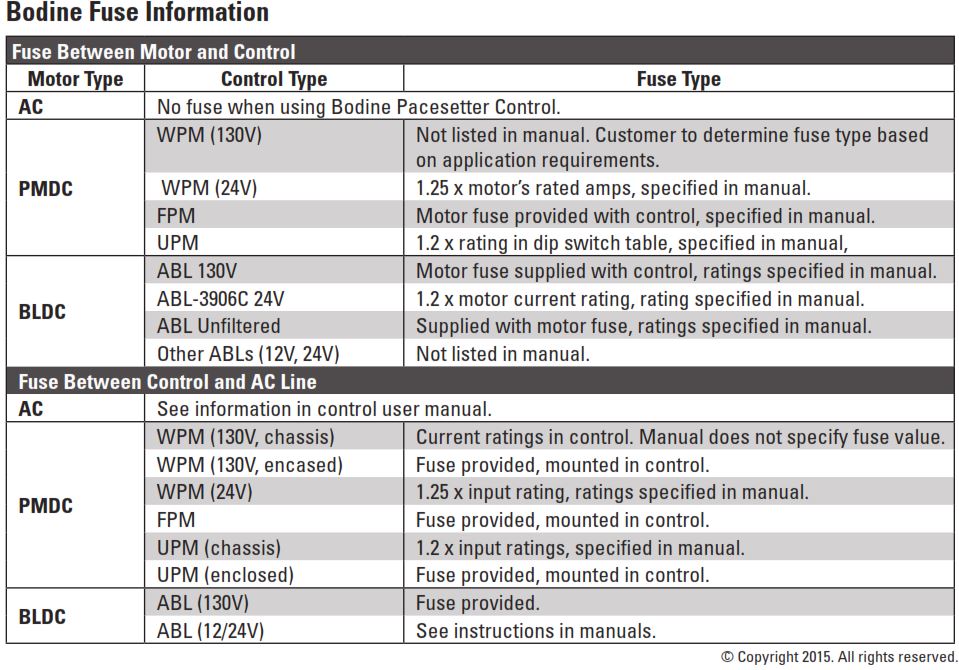Benefits of Fuse Protection
1. A fuse between the motor and AC line (to be used with single phase AC motors/gearmotors) provides motor protection under stall conditions and protects personnel from ground faults in the motor. It may not protect the motor from overheating under overload conditions.
2. A fuse between the motor and its control provides motor protection under stall conditions and protects personnel from ground faults in the motor. It does not protect the control during overload/stall conditions, and will not necessarily protect the motor from overheating under overload conditions.
3. A fuse between the control and the AC line provides protection against fires in cases where the control maybe damaged.
Please note that the suggested fuse values are only general guidelines. Take into consideration any unique safety requirements for your application, local safety codes or any other applicable installation rules for your equipment.
Specifying a Fuse –
AC Motor and Control Applications – Sizing a fuse between the AC line and a Split Phase motor/gearmotor.
- Use a time-delay fuse. The fuse current rating should be 200% of the motor nameplate current rating, or the next highest standard fuse rating. Fuse all ungrounded line leads. Split phase motors draw higher starting currents than PSC motors.
- For 115V motors, one line lead should be fused if the neutral lead is grounded.
- For 230V and higher voltage ratings, all line leads should be fused (applies to US installations only).
Sizing a Fuse between the AC line and a Permanent Split Capacitor (PSC) motor/gearmotor. 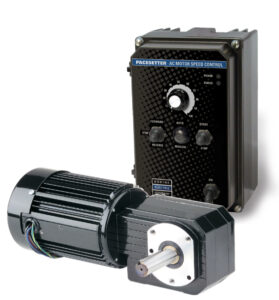
- Use a time delay fuse. The fuse current rating should be 120% of the motor nameplate current rating, or the next highest standard fuse rating. Fuse all ungrounded line leads.
- For 115V motors, one line lead should be fused if the neutral is grounded.
- For 230V and higher voltage ratings, all line leads should be fused (applies to US installations only).
Sizing a Fuse between an AC inverter (AC speed control) and a 3-phase AC inverter duty motor/gearmotor.
- The kind of fuse required depends on the inverter manufacturer. Some inverter manufacturers’ instructions state the motor leads must not be fused.
- The current limit of the inverter should be set appropriately to protect the motor.
- If using a Bodine inverter-duty AC speed control, the motor leads should not be fused. A line fuse is recommended.
Permanent Magnet DC (PMDC) Applications
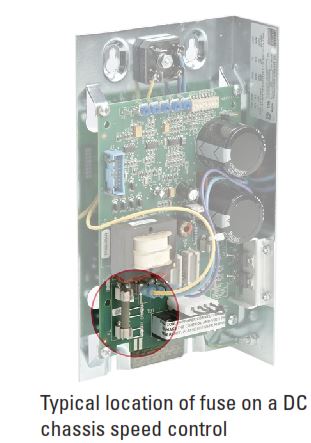 Sizing a Fuse between a PMDC motor speed control and a PMDC motor/gearmotor. Use a time delay fuse. Refer to the user manual of the control for fuse sizing information. In some controls, the fuse is provided with the control, and the control has an on-board fuse holder. In cases where the control manual does not specify sizing guidelines, the fuse current rating should be 115% of the motor nameplate current rating or the next highest standard fuse rating. Fuse both motor leads.
Sizing a Fuse between a PMDC motor speed control and a PMDC motor/gearmotor. Use a time delay fuse. Refer to the user manual of the control for fuse sizing information. In some controls, the fuse is provided with the control, and the control has an on-board fuse holder. In cases where the control manual does not specify sizing guidelines, the fuse current rating should be 115% of the motor nameplate current rating or the next highest standard fuse rating. Fuse both motor leads.
Brushless DC (BLDC) Applications Sizing a Fuse between a BLDC control and BLDC motor/gearmotor. Use a time delay fuse. Refer to the user manual of the control for fuse sizing information. Bodine’s filtered and unfiltered type ABL 130V controls are supplied with a motor fuse, which is placed into a fuse holder on the control board. The ratings of the fuses are specified in the user manual.
- Some of Bodine’s type ABL3906C 12V and 24V control manuals have fuse rating guidelines specified in the manual. The fuse current rating should be 120% of the motor nameplate current rating, or the next highest standard fuse rating. Install a fuse in two of the three motor phase connections, as shown in the control manual.
- In cases where fuse specification information is not provided in the manual, use a fuse with a current rating of 120% of the motor nameplate current rating, or the next highest standard fuse rating. Fuse two of the three motor leads.
Selecting a Fuse between a Speed Control and the AC line
Use a fast acting fuse. Fuse each AC line conductor that is not at ground potential. Do not fuse neutral or grounded conductors. Refer to each control’s manual for the recommended sizes.
In the cases where specific information is not provided in the manual, use a fuse with a current rating of 125% of the typical input current (as referenced in the manual), or the next highest standard fuse value.
To download a PDF version of this article, click here.
Copyright Bodine Electric Company © 01/2015. All rights reserved.
